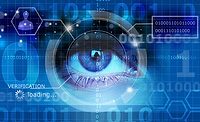Half of American adults – more than 117 million people – are in a law enforcement face recognition network, according to a report released today by the Center on Privacy & Technology at Georgetown Law. The study, The Perpetual Line-Up: Unregulated Police Face Recognition in America finds that one in four law enforcement agencies can access face recognition and that its use is almost completely unregulated.
“Innocent people don’t belong in criminal databases,” said Alvaro Bedoya, Executive Director of the Center on Privacy & Technology at Georgetown Law and co-author of the report. “By using face recognition to scan the faces on 26 states’ driver’s license and ID photos, police and the FBI have basically enrolled half of all adults in a massive virtual line-up. This has never been done for fingerprints or DNA. It’s uncharted and frankly dangerous territory.”
“Face recognition is a powerful technology that requires strict oversight,” said Clare Garvie, a Center associate and the author who led the Center’s records requests to over 100 law enforcement agencies. “But those controls by and large don’t exist today. With only a few exceptions, there are no laws governing police use of the technology, no standards ensuring its accuracy, and no systems checking for bias. It’s a wild west.”
Of the 52 agencies that acknowledged using face recognition, only one obtained legislative approval for its use and only one agency provided evidence that it audited officers’ face recognition searches for misuse. Not one agency required warrants, and many agencies did not even require an officer to suspect someone of committing a crime before using face recognition to identify her.
The report argues that police use of face recognition will have a profound impact on African Americans. A 2012 study, co-authored by an FBI expert, found that face recognition is less accurate on African Americans, women and young people. African Americans are also likely overenrolled in mug shot-based systems as a result of racial disparities in arrest rates. Yet the report reveals that police advertise the technology as being blind to race—and that two major face recognition companies do not test for bias.
“Face recognition systems are powerful—but they can also be biased,” the letter states. “A growing body of evidence suggests that law enforcement use of face recognition technology is having a disparate impact on communities of color, potentially exacerbating and entrenching existing policing disparities.”
The report proposes reforms to transform face recognition from a threat to Americans’ constitutional rights into a positive tool that can be used for high-stakes law enforcement. Among many recommendations, the report urges Congress and state legislatures to pass commonsense laws to regulate law enforcement face recognition, and recommends that the Department of Justice Civil Rights Division evaluate the disparate impact of police face recognition.
“This report represents a major step in how we think about the use of face recognition technology and how it is regulated,” said Dean William M. Treanor. “This yearlong effort once again highlights the critical need to have lawyers who understand technology and are well trained in the various aspects of cyber law. Georgetown Law will continue to take a leadership role in educating our lawyers on technology policy, privacy, and criminal justice.”


